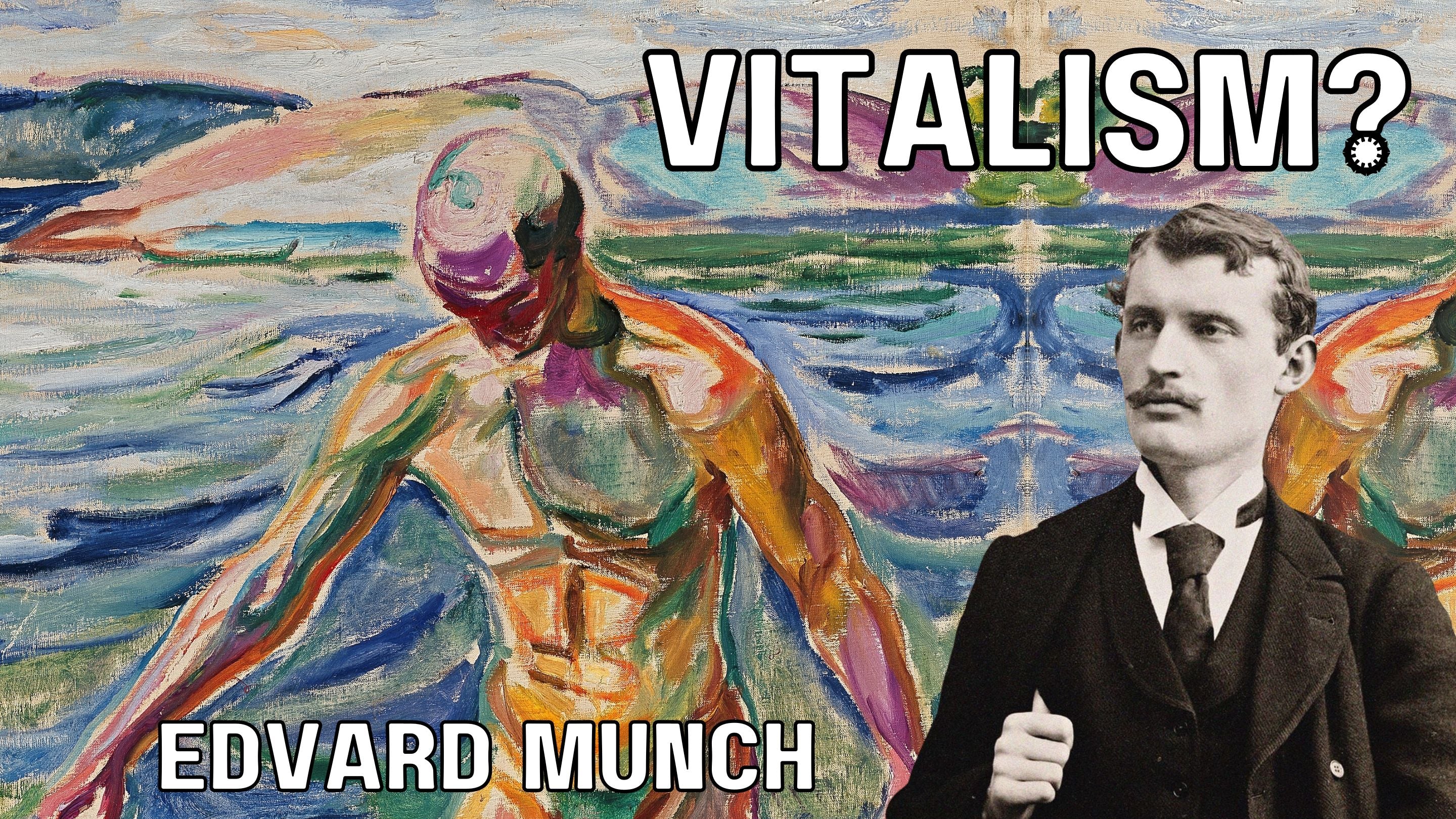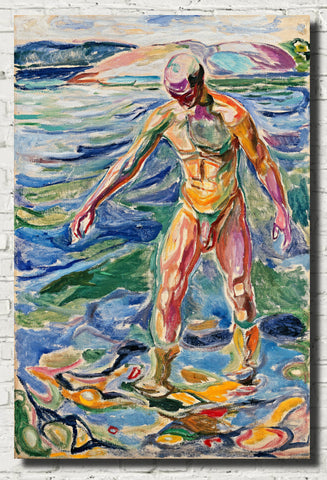Table of Contents:[hide]
Edvard Munch's 1918 painting, "Badende mann" (Bathing Man), is more than just a depiction of a nude figure emerging from the sea. It's a captivating journey into the depths of human experience, where the invigorating power of nature mingles with the quiet vulnerability of introspection.
A Plunge into Cool Turquoise
The painting immediately draws us into its cool, refreshing embrace. The man's muscular form is bathed in the shimmering turquoise of the Nordic sea, the ripples spreading around him like liquid brushstrokes. His eyes, closed and serene, suggest a deep connection to the natural world, a sense of being absorbed by the ocean's invigorating coolness.
Beyond the Physical: A Dance of Strength and Vulnerability
While the brushstrokes capture the vitality of the moment, the man's body reveals a subtle tension. Though strong and virile, his posture hints at a slight stoop, and his elongated limbs carry a touch of fragility. This interplay between strength and vulnerability is a hallmark of Munch's art, reflecting his own battles with anxiety and illness.
Echoes of "Vitalism" and Nature's Embrace
"Badende mann" sits within the context of the early 20th century's growing fascination with naturism and the revitalizing power of the natural world. It echoes the ideas of "vitalism," a philosophy that viewed all living things as pulsating with a powerful life force. The painting celebrates the man's reconnection with this primal energy, the cleansing power of the water washing away impurities and anxieties.
A Moment of Solitary Reflection
But beyond the physical rejuvenation, there's a sense of introspection. The closed eyes, the solitary figure gazing out at the vast expanse of the sea, suggest a moment of inward reflection. Munch's bathing man is not just invigorated; he is contemplative, perhaps pondering the mysteries of life and existence.
Color Palette: A Canvas of Duality
The use of color further amplifies the painting's message. The cool turquoise of the water stands in stark contrast to the warm, earthy tones of the man's skin and the distant cliffs. This color scheme creates a sense of division, emphasizing the man's connection to both the natural world and his own inner depths.
A Reflection of Munch's Own Journey
"Badende mann" is more than just a portrait of a nude male. It's a meditation on the human condition, a celebration of our physicality and vitality, intertwined with a vulnerability that connects us to our mortality and the vastness of the universe. As Munch himself wrote, "I paint what I have seen, what I have lived, what I have suffered." In "Badende mann," we see reflected Munch's own struggles and triumphs, inviting us to engage with our own vulnerabilities and seek rejuvenation in the embrace of the natural world.
Beyond the Brushstrokes: A Legacy of Enduring Power
"Badende mann" continues to captivate audiences today. Its evocative imagery and timeless themes resonate with viewers seeking solace and connection in the face of life's challenges. The painting serves as a reminder that vulnerability is not weakness, but a necessary part of the human experience, and that even in the midst of solitude, we are connected to something much larger than ourselves.


